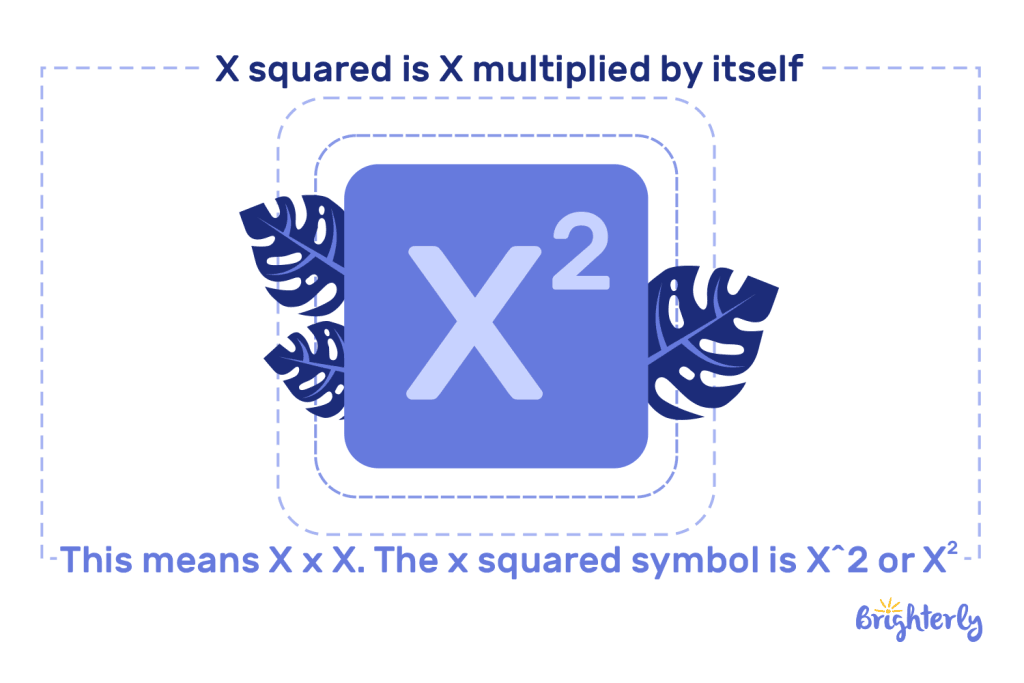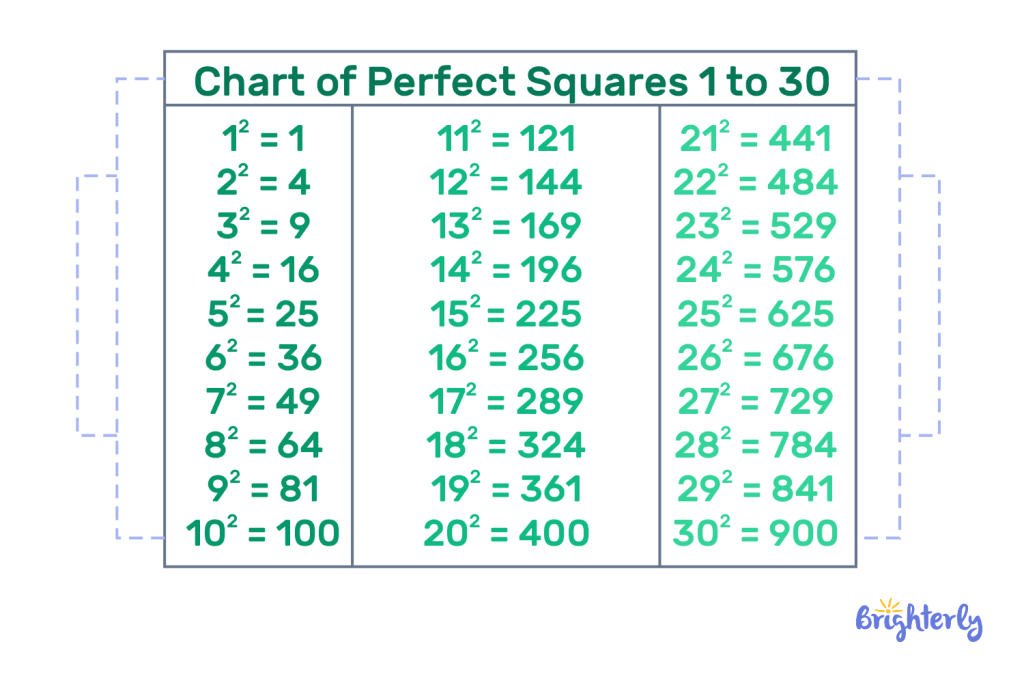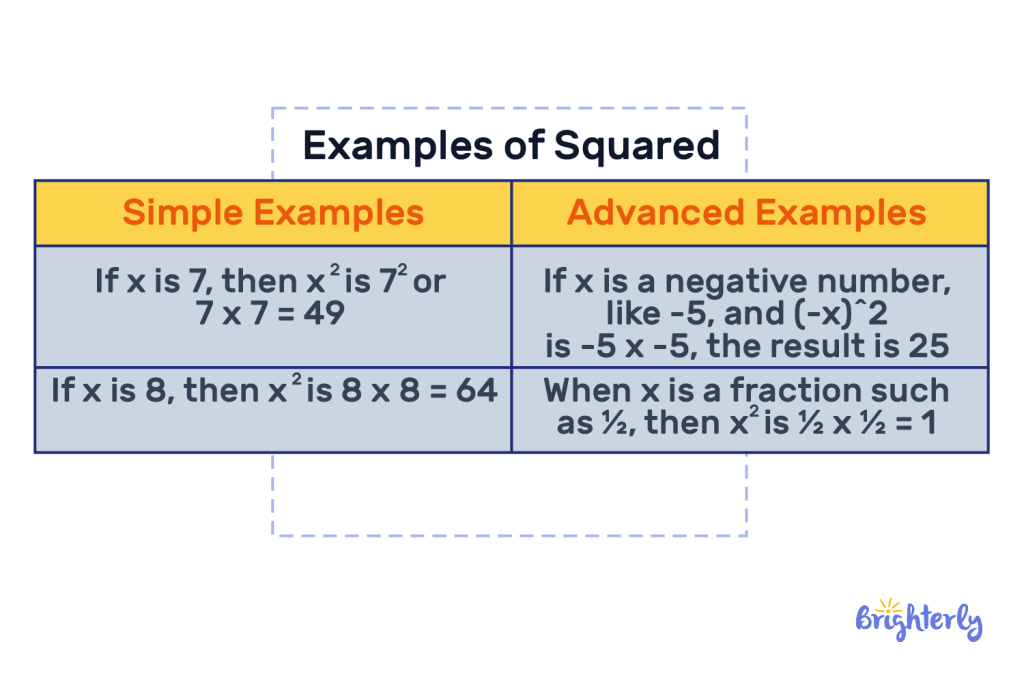X Squared – Definition, Examples, Facts
reviewed by Jo-ann Caballes
Updated on July 15, 2025
One of the first questions children ask when taking this topic is: Is squared times 2?
The answer is no.
X squared is a mathematical expression that represents the multiplication of a number by itself.
So, squared is times the number itself not times 2.
In this article, we explain the function of this expression and its uses, along with simple and complex examples to help you understand how to solve for x squared.
What Is X Squared?
X squared is X multiplied by itself. This means X × X. The x squared symbol is X^2 or X2.
In this equation, 2 is an exponent of X. Therefore if X was multiplied by itself 3 times, the exponent would be 3 and expressed as X3.
Likewise, x squared times x squared will be X4.
However, let’s focus on X squared for now.

Definition of X Squared
X squared may be defined as the multiple of a number or variable by itself. For example, if X is 4, then X squared (X2) is 42 or 4 × 4 which equals 16.
Therefore the x^2 formula is X × X.

Examples of X Squared
Squaring numbers can be straightforward as with whole numbers, but they can also get quite technical. Let’s look at some examples below:

Understanding X Squared
We have established that X squared (expressed as X2) is the multiplication of a number by itself. Let’s go over some other mathematical statements to understand this concept more:
- X squared times X (x^2 times x) : This is X2 × X = X3. For instance if X = 2, then 22 × 2 = 23 or 2 × 2 × 2 = 8.
- x times x^2 ( x*x^2) or x(x^2): x times x squared is the same as X squared times X.
- X squared plus X squared: We express this as X2 + X2 = 2X2. If X was 6, then 62 + 62 = 122
- X squared + X (x^2 + x): X2 + X = 2X2. If X = 3, then X2 + X = 9 + 3 = 12.
- x squared divided by x: This is X2 ÷ X = X. If X is 4, then 42 ÷ 4 = 4
- X divided by X squared (x/x^2): X ÷ X2 = 1/x. If X = 6, then 6 ÷ 62 = ⅙
- The square root of X2: It is a known mathematical rule that the square root of a squared number is that number. Thus, √X2 = X. If X is 144, then √1442 = 144.
The Importance of X Squared in Mathematics
The concept of X squared depicts the squaring of math variables, and this plays an important role in mathematics because it occurs in various mathematical fields such as geometry, algebra, and graphs, as well as in science and real-world usage.
The Role of X Squared in Algebra
We come across X squared in algebra when solving quadratic equations, factoring, expanding expressions, and so on. Its primary role is to help understand squared relationships, solve quadratic equations, and accurately model graphs, especially parabolas.
Properties of X Squared
Unique Characteristics of X Squared
The square of a number is always non-negative (positive or zero) even if the number is negative. This is because the product of two negative numbers is always positive.
The only time the square of a number can be 0 is if the number itself is 0.
Common Behaviors and Patterns of X Squared
In a parabola graph where y = X2, y is positive if X is less than or greater than 0. However if X = 0, then y = 0 because 02 = 0
Difference Between X and X Squared
Comparative Analysis: Linear versus Quadratic
In a graph where X is a straight line such as y =mx + b, it is known as a linear function.
However, X2 creates a curved “U” shape known as a parabola such as y = ax2 + bx + c.
The X2 represents a quadratic function and X a linear function. Knowing the difference is important in solving algebraic and calculus problems.
Impact of Squaring on Function Behavior
By squaring a variable, we change its function. In a graph, it changes X from a linear function to X2 a quadratic function.
Equations Involving X Squared
Here are some simple and complex equations involving X-squared.
Simple Equations Involving X Squared
X squared can apply to whole numbers whether positive or negative and all we have to do is multiply it by itself such as:
92 = 9 × 9 = 81
–62 = –6 × –6 = 36
Complex Equations Involving X Squared
X squared can also appear in complex equations such as 2×2 –5x + 2 = 0. To solve this, we need to use the quadratic formula.
Writing Equations with X Squared
Quadratic equations with X squared should be written in the standard form so we can use the quadratic formula to solve them properly.
The standard form of quadratic equations is ax2 + bx + c = 0 and the quadratic formula is:
X = –b ± √b2 − 4ac/ 2a
We can therefore solve the equation 2×2 –5x + 2 = 0 through the following steps:
Step 1: Find the values for a, b, and c: a = 2, b = –5, and c =2
Step 2: Put the values into the quadratic formula: x = –(–5) ± √(–5)2 – 4 (2) (2) /2 × 2
Step 3: Simplify: x = 5 ± √25 – 16 / 4
X = 5 ± √9 / 4
X = 5 ± 3 / 4
X = 5 + 3 / 4 = 8 / 4 = 2
OR
X = 5 – 3 / 4 = 2/4 = ½
Therefore X = 2 or X = ½.
Guidelines for Writing Quadratic Equations
With the following guidelines, let’s convert a non-quadratic equation to a quadratic equation. Our non-quadratic equation is 8×2 + 4 = 3x.
- a must not be equal to 0. In the equation given, a is 8.
- Arrange all the terms in descending order of degree, x squared is always the greatest, I.e., x2, x, then a constant. Our constant here is 4. So the equation is arranged as 8×2 – 3x + 4. Because we moved 3x to the opposite side of the equal sign, it becomes negative.
- The equation should be equal to 0: 8×2 – 3x + 4 = 0
Other guidelines include:
- If fractions are present, simplify the equation first.
- There should be no value greater than x squared (x2).
Practice: Crafting Your Own Quadratic Equations
Using the guidelines listed above you can craft your own quadratic equations to solve x squared by substituting different values to replace a, b, and c.
Solved examples
Easy Level Practice Problems
Solved math problem 1
Solve the following:
- If x squared = 81, what is the value of x?
- X = 11, what is X2.?
Solution
|
Intermediate Level Practice Problems
Solved math problem 2
Solve the following:
- What Is X2 , when X = –9 + 13
Solution
First, we solve the equation for X:
–9 + 13 = 4
| Therefore, X2 = 4 × 4 = 16 |
Hard Level Practice Problems
Solved math problem 3
Find the value of X in decimal for the following equation:
- 3×2 – 9x + 3 = 0.
Solution
We solve this using the quadratic formula which is :
X = –b ± √b2 − 4ac/ 2a
a = 3
b = –9
c = 3
Now, we substitute the values in the formula:
X = –(–9) ± √–92 − 4 × 3 × 3 / 2 × 3
X = 9 ± √81 – 36/ 6
X = 9 ± √45/ 6
X = 9 ± 6.70/ 6
X = 9 + 6.70/ 6 = 15.70/ 6 = 2.61
OR
X = 9 – 6.70/6 = 2.3/6 = 0.38.
| Therefore X = 2.61 or X = 0.38. |
Practice Problems on X Squared
Frequently Asked Questions on X Squared
What is X squared?
X squared (X2) is a mathematical expression used to imply the multiplication of a number by itself. For instance, if X is 5, then X2 is 5 × 5 = 25.
Why is X squared important in mathematics?
X squared is important in mathematics because it occurs in various mathematical fields such as geometry, algebra, and graphs. Likewise, it is applicable in science and real-world usage.
How does X squared behave in an equation?
X squared is always non-negative even if the number is negative. Also, in a quadratic equation, X2 tells us the shape of the graph.
What is the difference between X and X squared?
X refers to a single variable. It can be used to represent a number. X squared refers to the product of that number by itself. For example, X may be 2 and X2 is 2 × 2 which is 4.
Can X squared be negative?
No. Since X squared is a number multiplied by itself, it cannot be negative. This is because even if X is negative, negative multiplied by negative is positive.
X Squared worksheets
In this article, we answered questions such as what does x^2 equal to when it is added, multiplied, or divided by other values. To understand more about the square symbol in math, we recommend that you check out our free worksheets:







